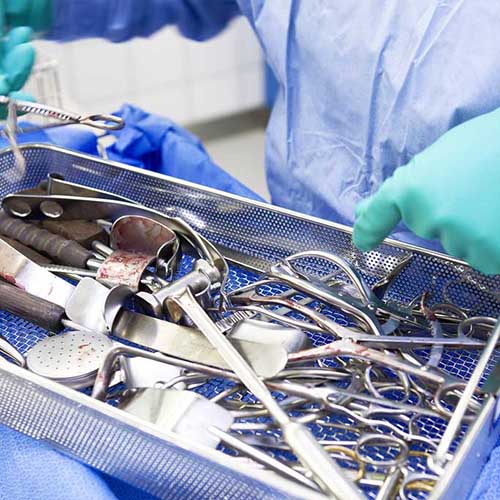
Laparoscopic surgery necessitates the use of sophisticated tools (such as trocars, cannulas, stryker laparoscopic tower, etc.) that are correctly calibrated. The most significant distinction between surgical tools used in open surgery and those used in laparoscopic surgery is that the latter are more sophisticated in design while also being more delicate in manufacture. As a result, bioburden (microorganisms and detritus) can become trapped inside the crevices of laparoscopic tools (whether new or refurbished medical equipment), making them more susceptible to infection. As a result, laparoscopic tools are more difficult to clean, disinfect, and maintain properly. Furthermore, because of their delicate nature, the gentlest cleaning and sterilization procedures must be employed in addition to sterilization.
Additionally, thorough cleaning, maintenance, and sterilization are done by refurbished medical equipment companies in order to avoid compromising the safety of the patient, the surgeon, or any operating room staff members. It has become more important to clean thoroughly. Disinfection of laparoscopic medical equipment is a must due to the increase in complexity of laparoscopic operations and the appearance of resistant strains of bacteria, mycobacteria, fungus, and viruses. Sterilization is the complete and total eradication of all kinds of microbiological life. It can be achieved by the use of steam, gas, or chemicals. On the other hand, disinfection is the relative elimination of harmful organisms, except spores.
Check Addler, the best new and refurbished medical equipment supplier in India and world. They also deal in best trocars and cannulas.
When it comes to optimizing LI processing, various procedures/steps must be completed in order to decrease the danger of spreading infection from used instruments and other sources to healthcare staff.
They are:
The majority of big hospitals have a Central Sterile Supplies Department, from which the new or refurbished medical equipment is brought to the operating room and processed there. It is possible to follow the essential stages in instrument processing even in hospitals or nursing homes that do not have a sophisticated CSSD.
Fact: The most crucial aspect after cleaning laparoscopic instrument is the Storage
Instruments should be utilized or appropriately kept as quickly as possible following sterilization or high-level disinfection to avoid becoming contaminated. Proper Storage is just as critical as proper decontamination, cleaning, sterilization, or high-level disinfection (HLD). It is possible that objects will get contaminated if they are not maintained correctly, despite the fact that all of the work and materials expended to treat them have been squandered properly. Specific recommendations for proper storage depend on whether sterilization or high-level disinfection (HLD) is still being conducted, the method utilized, and whether the objects are wrapped or unwrapped before being placed in Storage.
Numerous variables, including the following, contribute to the shortening of the shelf life of a wrapped item:
Golden Nimbus Pvt. Ltd. G-4, Sangeet Plaza, Near SBI, Marol Naka, Metro Station, Marol Maroshi Rd, Andheri(East), Mumbai, Maharashtra 400059
